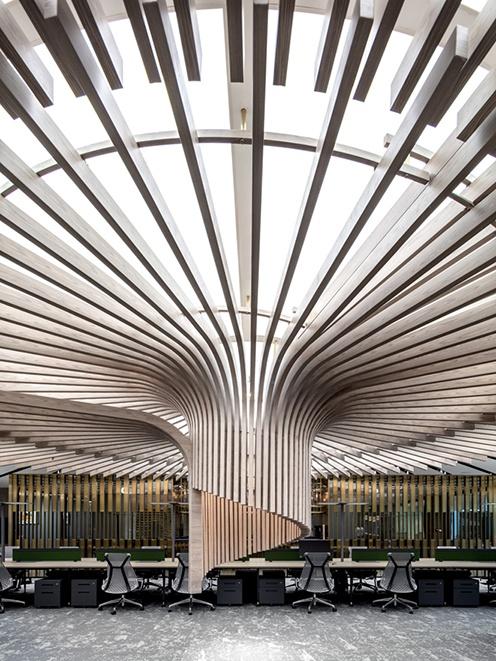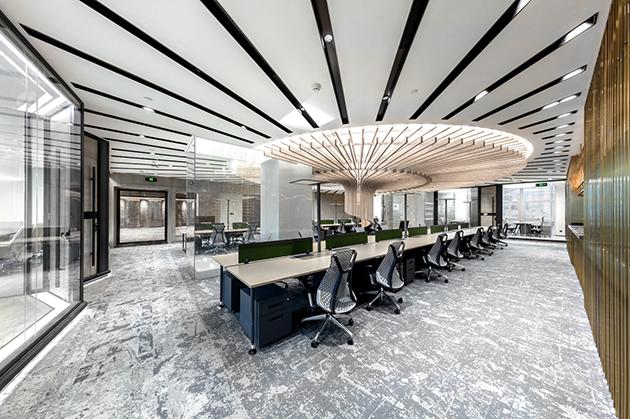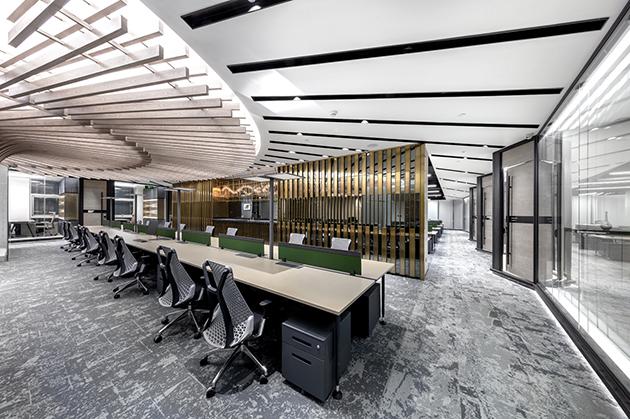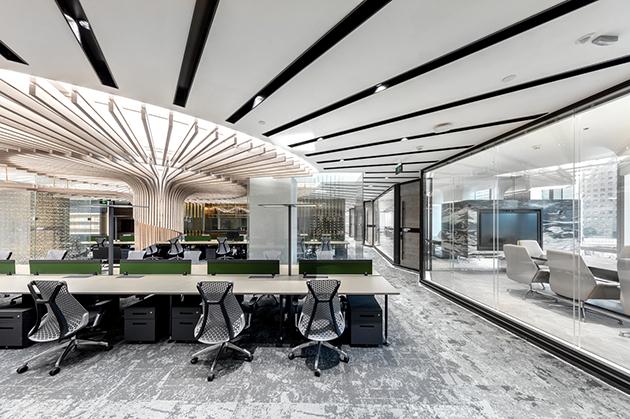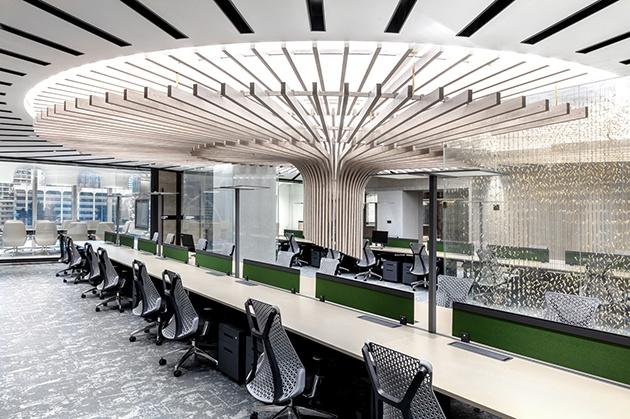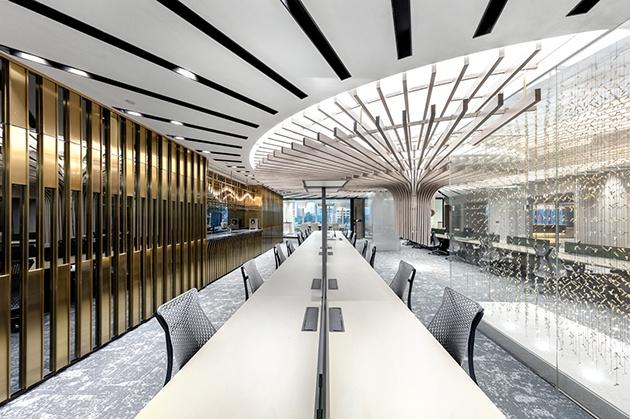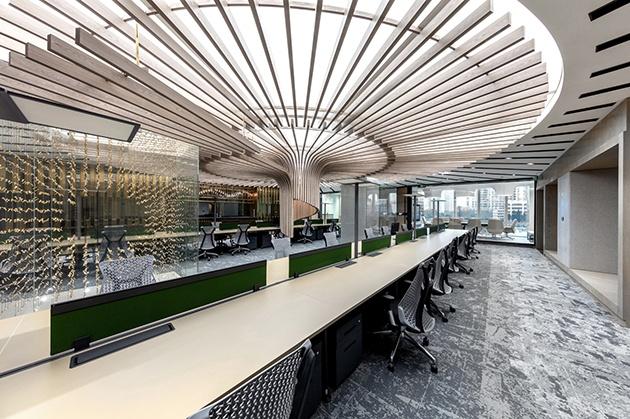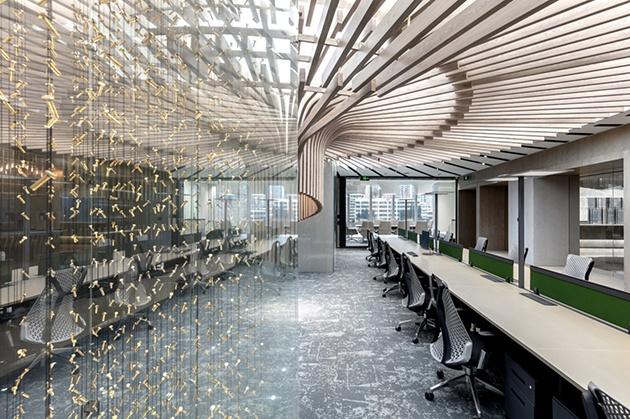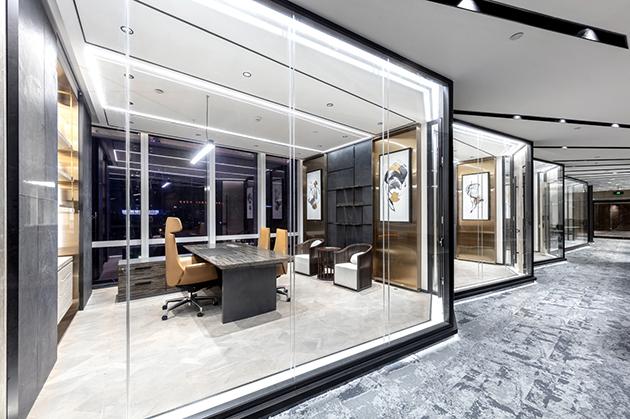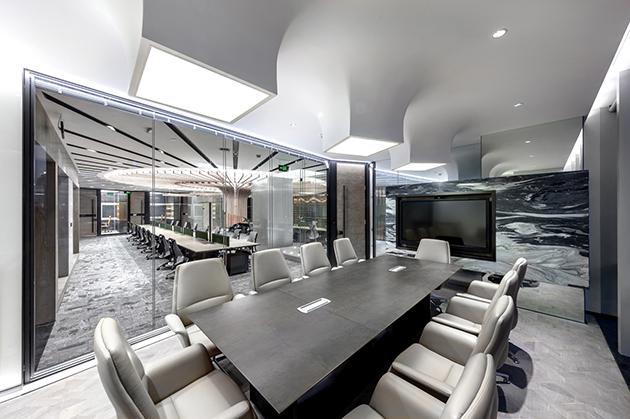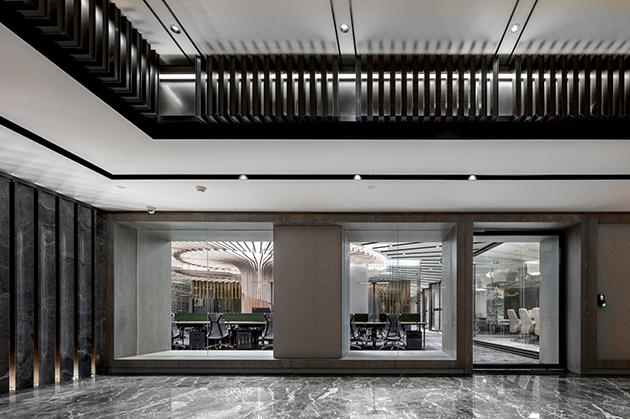shenzhen paul run asset management office
Contemporary commercial buildings have become increasingly conservative in their design due to the prevailing marking conditions; land, construction and labour cost, restrictive planning and environmental codes, profit margin and speed of construction implies very little innovation in the architectural approach to commercial buildings.
As interior designer, the consideration of efficiency, servicing and cost often lead to schemes that tends to be very compliant to the existing orthogonal shell and core where the spatial and movement quality is often repetitive and restrictive: an endless rows of work spaces that repeats along the building grids. This iterative approach inevitably delivers interior spaces that are disassociated externally from its context and internally from its users experience in a bid to drive a higher saleable area. The background of the Paul Run Asset office is not dissimilar to the above described.
Following a thorough site survey and detail brief study, we however noticed some subtle opportunities: whilst the structural grid is efficiently laid out, the headroom, underfloor service and a relative generous provision of space per head derived from the brief imply a comparatively relaxed circulation space is possible and that there is a lot of scope to re-define the ceiling plan. Our principle strategy is therefore trying to re-interpret the circulation enclosure and the ceiling-scape in order to provide visual and sightline variations to the office space without unduly harming the efficiency.
A series of serrated glazed partitions are arranged along the north and south perimeter to enclose the conference and individual office spaces. The varying serrations create a series of angled reflecting and refracting planes that constantly move our eyes away the axial directions and lessen the sensation of repetitiveness. These angled glazed planes also interrupt the direct visual link between the conference rooms and main office space to further enhance the respective privacy.
A conical lighting feature was positioned at the centre of the main conference room. This descending feature also re-align the ceiling grid into a radial pattern that extends throughout the interior to soften the orthogonal structure and desk grid. The feature light's descending vertical lines creates a spiral pattern that constantly drives our sightline laterally and create a visual dynamism in an otherwise static space.
Completed in 2018.

